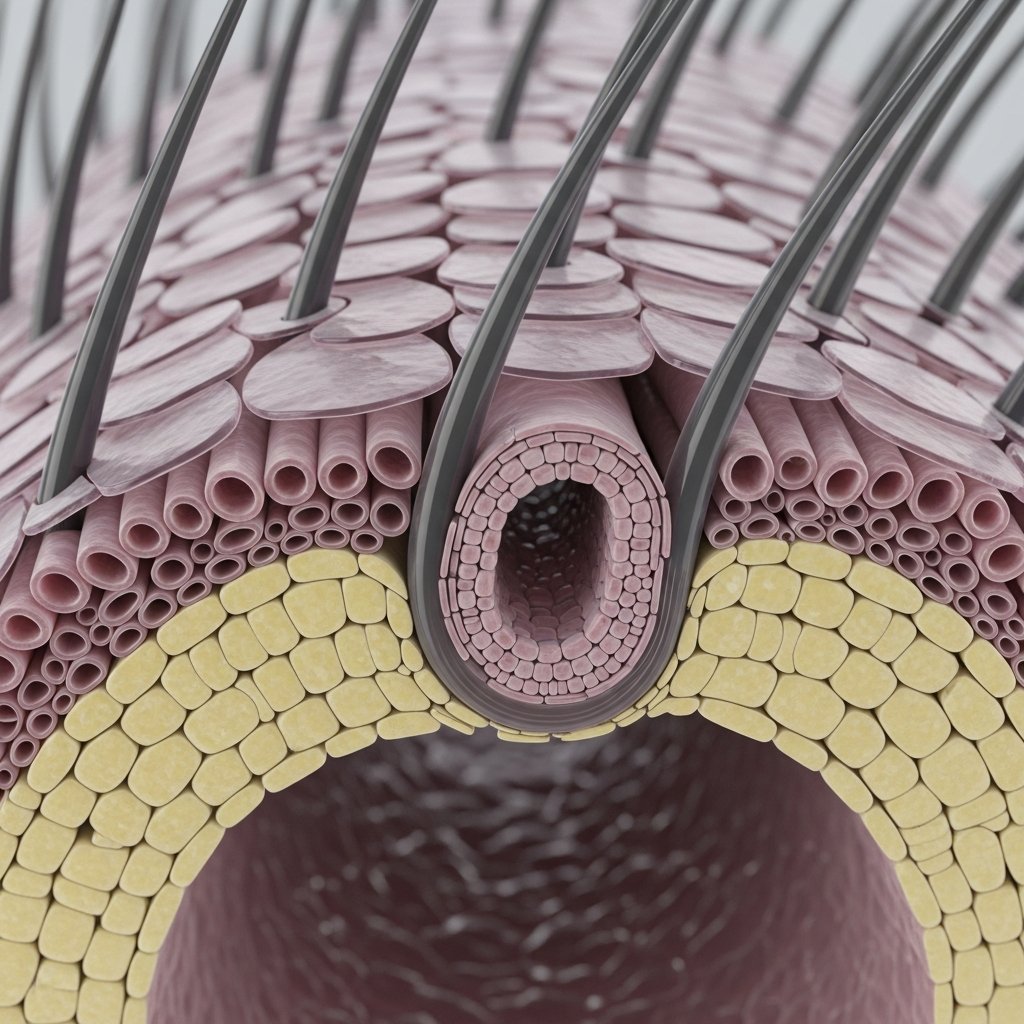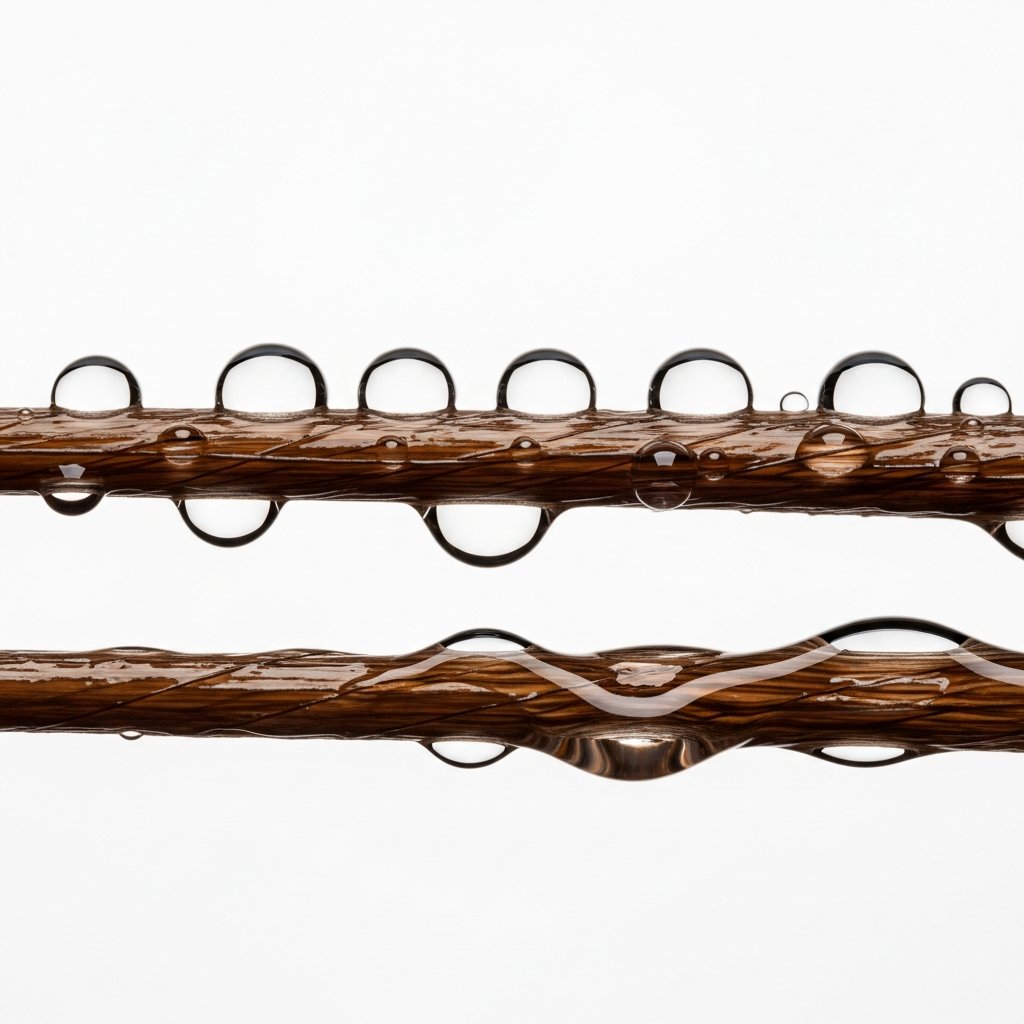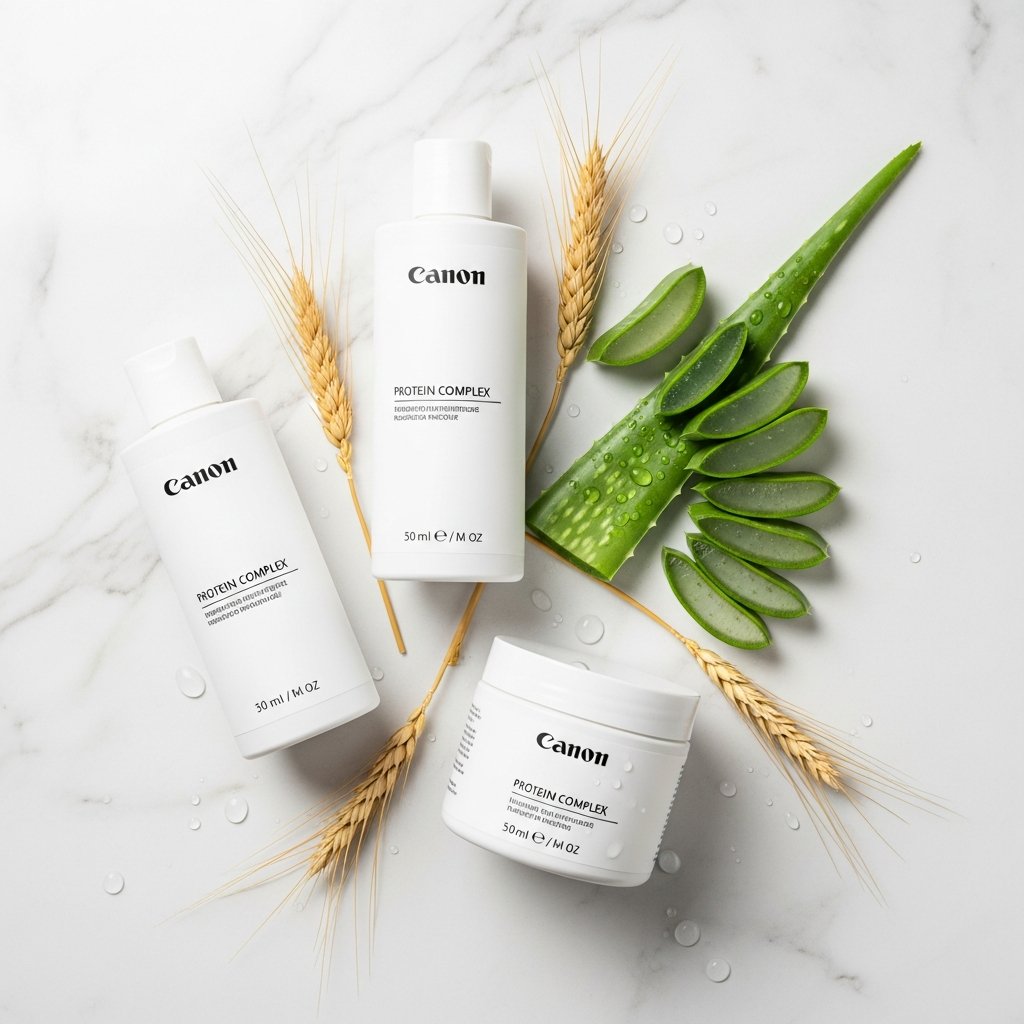The Delicate Equilibrium of Hair Health
If you have ever stood in the aisle of a beauty supply store, overwhelmed by the sheer number of products promising to "repair," "hydrate," "strengthen," or "restore," you are not alone. The terminology can be confusing, but the secret to healthy, manageable hair often boils down to two fundamental components: protein and moisture. Understanding the relationship between these two elements is the Holy Grail of hair care. It is the difference between hair that snaps when you brush it and hair that bounces with vitality.

Hair is a complex fiber, primarily composed of a protein called keratin. This protein gives the hair its structure, shape, and strength. However, for that structure to remain flexible and resilient, it requires water—hydration. Think of your hair like a dry spaghetti noodle versus a cooked one. A dry noodle is strong and hard (high protein, low moisture), but it snaps easily under pressure. A cooked noodle is soft and flexible (high moisture), but if it is overcooked, it becomes mushy and falls apart (low protein structure). The goal of a balanced hair care routine is to find that perfect "al dente" state where the hair is strong enough to withstand styling but elastic enough not to break.
In this comprehensive guide, we will explore the science behind the protein-moisture balance, how to diagnose your hair’s current state, and the specific steps required to curate a routine that addresses your unique needs. Whether you are recovering from bleach damage or trying to define natural curls, mastering this balance is the first step toward your best hair days.
The Science: What Does Your Hair Actually Need?
To treat your hair effectively, you must first understand what these components actually do at a microscopic level. Hair strands are made up of the cuticle (the outer layer), the cortex (the inner strength), and the medulla (the core).
The Role of Protein
Protein provides the architecture. It acts as the scaffolding of the hair shaft. Daily wear and tear, heat styling, chemical treatments like coloring or relaxing, and environmental factors slowly chip away at the hair's cuticle. This leads to gaps in the hair structure, causing it to become weak and porous. Protein treatments work by filling in these gaps, temporarily patching the holes in the cuticle and strengthening the cortex. They essentially harden the hair strand, giving it structure and reducing breakage.
The Role of Moisture
Moisture provides elasticity. While protein provides the frame, moisture (water) provides the flexibility. Hydration allows the hair to stretch and return to its original shape without snapping. It keeps the cuticle smooth and prevents the hair from looking dull or feeling like straw. It is important to note that in hair care science, "moisture" refers to water, not oil. Oils and butters are sealants; they help trap water inside the hair shaft, but they do not hydrate the hair themselves. True moisture comes from water-based products and humectants that draw water into the hair fiber.
The Diagnosis: The Wet Stretch Test
Before you can balance your routine, you need to know where you currently stand. The most reliable way to determine if your hair needs protein or moisture is the Wet Stretch Test. You cannot accurately judge the elasticity of dry hair, so perform this test on freshly washed, damp hair before applying any conditioner.
- Isolate a small section of about 10 strands of wet hair.
- Wrap the ends around your fingers to get a secure grip.
- Gently pull to stretch the hair.
The Results:
- Balanced Hair: The hair stretches a little bit and then returns to its original length without breaking. This is the goal.
- Protein Deficient (Needs Protein): The hair stretches significantly—sometimes appearing to stretch endlessly—and does not return to its original shape, or it breaks after stretching very far. It feels gummy or mushy.
- Moisture Deficient (Needs Moisture): The hair does not stretch at all. It feels rigid and snaps instantly when you apply tension. It feels dry, rough, and brittle.
Signs You Need More Moisture
Moisture deficiency is the most common issue, especially for those with curly or coily hair textures, as the natural oils from the scalp have a harder time traveling down the spiral of the hair shaft.
Visual and Tactile Signs:
- Rough Texture: The hair feels like straw or sandpaper when you run your fingers through it.
- Dullness: The hair lacks shine and absorbs light rather than reflecting it.
- Tangles Easily: Dry cuticles are raised and catch on one another, causing severe knotting.
- Frizz and Static: Dehydrated hair reaches out to the atmosphere to find water, resulting in a halo of frizz or static electricity.
- Snap Breakage: When you brush or style, you hear a snapping sound, and short pieces of hair fall to the floor.
How to Fix It:
Focus on hydration. Incorporate shampoos and conditioners that list water (Aqua) as the first ingredient. Look for humectants like Glycerin, Aloe Vera, Honey, Hyaluronic Acid, and Panthenol. Use a leave-in conditioner every time you wash, and incorporate a deep moisturizing mask once a week. Finish with an oil to seal that hydration in.
Signs You Need More Protein
Protein deficiency usually occurs in hair that has been chemically treated, heat-damaged, or is naturally high porosity. When the structural integrity of the hair is compromised, it loses its ability to hold shape.
Visual and Tactile Signs:
- Gummy Feeling: When wet, the hair feels mushy, overly soft, or like cotton candy.
- Limpness: The hair struggles to hold a curl or style. It lays flat and looks lifeless.
- Loss of Curl Pattern: For curly hair, the curls appear looser, stringy, or undefined.
- Elasticity Issues: As noted in the stretch test, the hair stretches too much and doesn't bounce back.
How to Fix It:
Introduce protein treatments gradually. Look for ingredients that contain the words "hydrolyzed," "amino acids," or "protein." Common effective ingredients include Hydrolyzed Wheat Protein, Hydrolyzed Silk, Keratin, and Soy Protein. A monthly or bi-weekly protein treatment can restore structure. However, be cautious not to overdo it, as this can lead to protein overload.
The Danger of Overload: Too Much of a Good Thing
One of the biggest mistakes people make is assuming that if a little is good, a lot is better. This is false in hair care.
Protein Overload
If you use protein shampoos, conditioners, and leave-ins exclusively, your hair can become hard, brittle, and stiff. It will snap easily because it has too much structure and zero flexibility. To fix protein overload, stop all protein products immediately. Use a clarifying shampoo to remove buildup and focus intensely on moisture-rich deep conditioning without any protein ingredients.
Moisture Overload (Hygral Fatigue)
Conversely, constantly soaking your hair in water and deep conditioning overnight can lead to Hygral Fatigue. This happens when the hair cuticle swells and contracts excessively as it absorbs and releases water, weakening the fiber. The hair becomes limp, overly soft, and fragile. To fix this, introduce a light protein treatment to add structure back to the cuticle and reduce the conditioning time.
The Factor of Hair Porosity
Your hair's porosity—its ability to absorb and retain moisture—plays a massive role in how you balance protein and moisture.
- Low Porosity: The cuticles are tightly bound and lay flat. Moisture has a hard time getting in, but once it's in, it stays. Low porosity hair generally needs more moisture (facilitated by heat, like a steam cap) and is protein-sensitive. It requires very little protein, as it can build up quickly on the surface.
- High Porosity: The cuticles are raised or damaged, often looking like Swiss cheese under a microscope. Moisture enters easily but leaves just as fast. High porosity hair usually requires more protein to fill the gaps in the cuticle and help retain moisture. Heavier sealants (oils and butters) are necessary to keep hydration locked in.
- Medium Porosity: The ideal balance. The cuticles are loose enough to let moisture in but tight enough to keep it there. A balanced routine of regular moisture and occasional protein maintenance works best.
Curating Your Routine by Hair Type
For Fine, Straight Hair
Fine hair is easily weighed down by heavy moisture and easily hardened by strong proteins.
- Focus: Lightweight hydration.
- Routine: Use volumizing shampoos and light conditioners. Use a protein treatment once every 4-6 weeks, but avoid heavy keratin treatments that can make hair stiff. Avoid heavy oils.
For Curly and Coily Hair (Types 3 & 4)
Textured hair is naturally drier because of the shape of the strand.
- Focus: Intense moisture with structural support.
- Routine: Deep condition weekly with heat. Use the LOC (Liquid, Oil, Cream) method to seal in moisture. Because the bends in curly hair are points of weakness, regular light protein treatments (like rice water or amino acid blends) help maintain curl definition without causing brittleness.
For Bleached or Chemically Treated Hair
Chemical processing destroys the protein bonds in the hair.
- Focus: Reconstruction (Protein) followed by Moisture.
- Routine: This hair type needs the most protein support. Use bond-building products (which differ slightly from traditional protein but support structure) regularly. Follow every strengthening treatment with a moisturizing conditioner to restore softness.
Expert Tips for Maintaining the Balance
- Read Your Labels: Ignore the front of the bottle. The marketing terms "repair" and "strengthen" usually mean protein, while "hydrate" and "smooth" usually mean moisture. The ingredient list reveals the truth.
- Rotate Products: Do not use the exact same shampoo and conditioner every single wash for years. Have a "moisturizing" set and a "strengthening" set and alternate based on how your hair feels that week.
- Use Heat Wisely: Heat styling depletes moisture and denatures protein. Always use a heat protectant, which acts as a barrier. If you are deep conditioning, add indirect heat (like a warm towel) to help the moisture penetrate low porosity hair.
- Diet Matters: Hair is dead keratin, but the follicle is alive. A diet rich in protein, healthy fats (Omega-3s), and water ensures that the new hair growing out of your head is structurally sound from the start.
Frequently Asked Questions
Q: Can I mix protein and moisture treatments together?
A: Yes, you can, but it is often better to layer them or use products formulated with a balance. If you are doing a heavy DIY treatment, it is generally recommended to do the protein treatment first (to strengthen) and follow with a moisture mask (to soften).
Q: How often should I use a protein treatment?
A: For healthy hair, once every 4-6 weeks is sufficient. For damaged or high porosity hair, every 2 weeks may be necessary. Always monitor how your hair responds; if it starts feeling stiff, back off.
Q: Are bond builders (like Olaplex or K18) the same as protein treatments?
A: Not exactly. Bond builders work at a molecular level to repair disulfide bonds within the hair, whereas traditional protein treatments patch the outer cuticle and cortex with hydrolyzed proteins. Bond builders generally do not cause protein overload and can be used more frequently, but they should still be part of a balanced routine.
Q: Does coconut oil count as protein?
A: No, coconut oil is a lipid (fat). However, it behaves uniquely because it can penetrate the hair shaft and prevent protein loss during washing. It mimics some effects of protein by adding rigidity, which is why some people with protein-sensitive hair find coconut oil makes their hair brittle.
Q: My hair feels dry but protein treatments make it worse. What is wrong?
A: You likely have low porosity hair or are in protein overload. Even though the hair feels dry, adding protein is making it stiff. You need to strip the buildup with a clarifier and use heat-assisted deep conditioning to force moisture into the hair shaft.
Conclusion
Balancing protein and moisture is not a one-time fix; it is an ongoing relationship with your hair. Your hair's needs will change with the seasons, with hormonal fluctuations, and with changes in your styling habits. By learning to read the signs—distinguishing between the mushiness of protein deficiency and the brittleness of moisture deficiency—you empower yourself to make the right choices for your hair health.
Remember, there is no single "miracle product" that works for everyone. The miracle lies in understanding the science and responding to what your hair is telling you. Start with the stretch test, check your ingredient labels, and adjust your routine today for stronger, shinier, and healthier hair tomorrow.

















